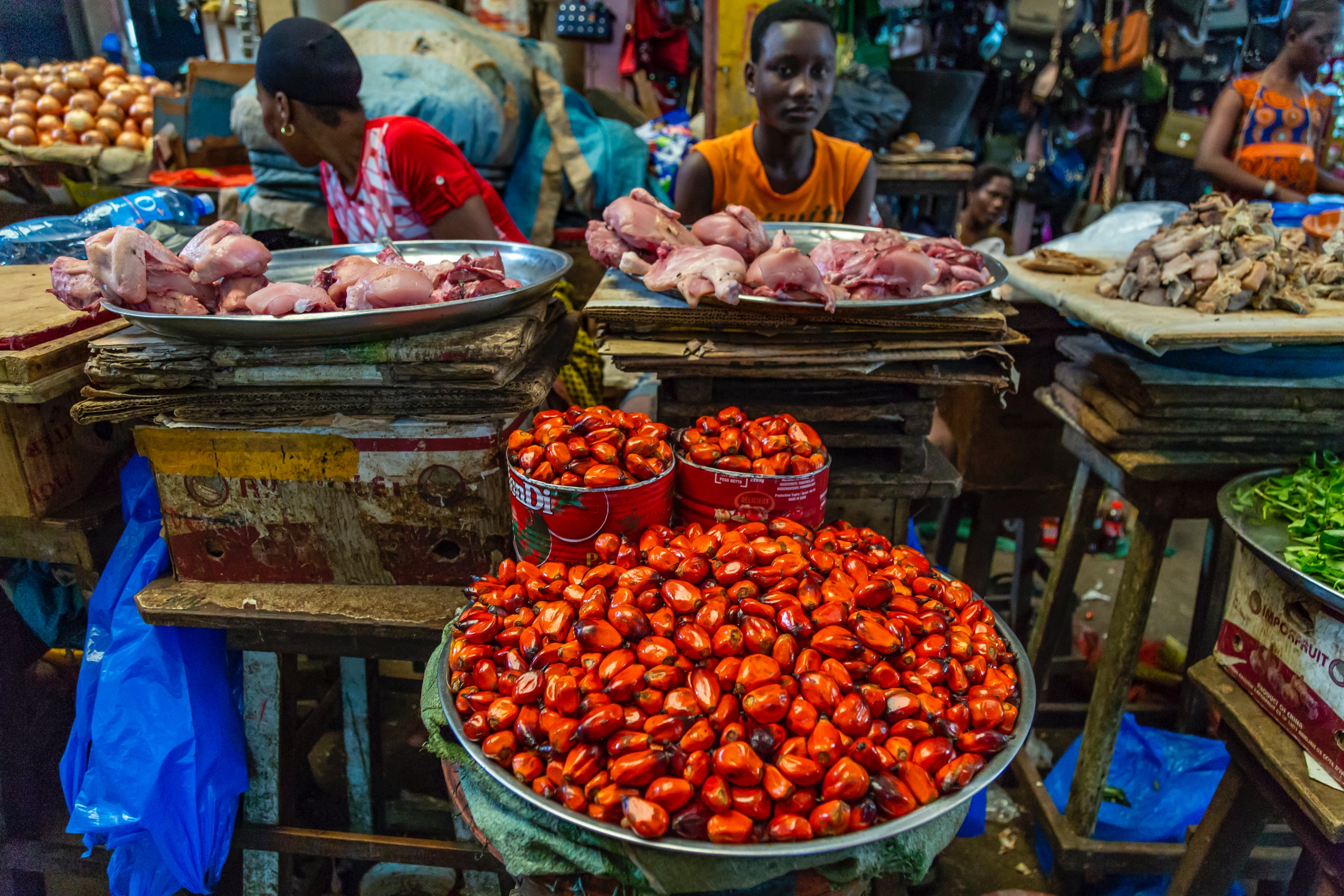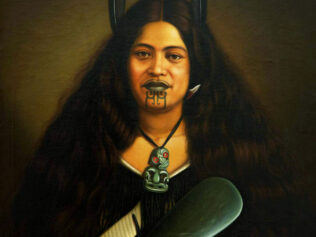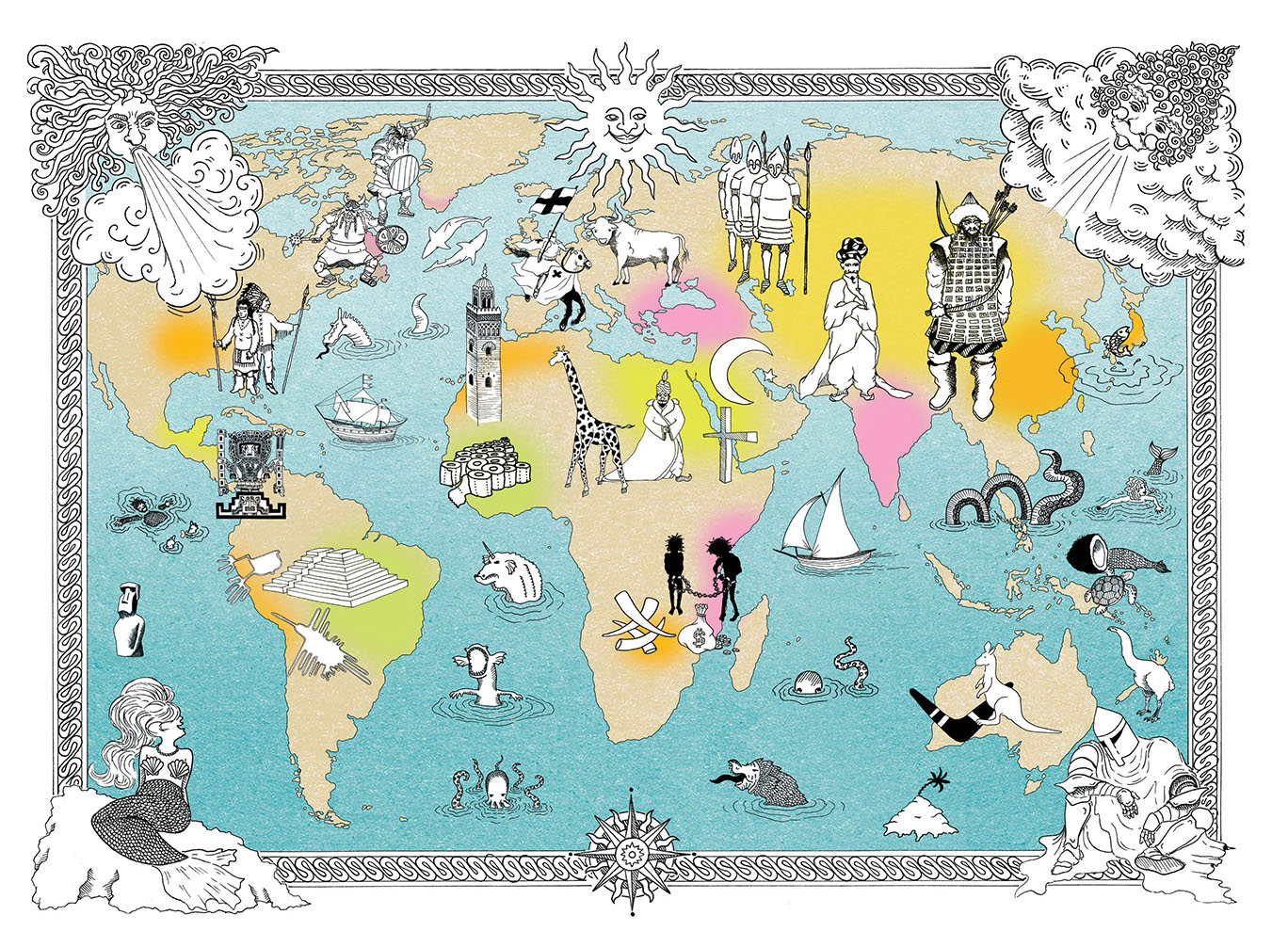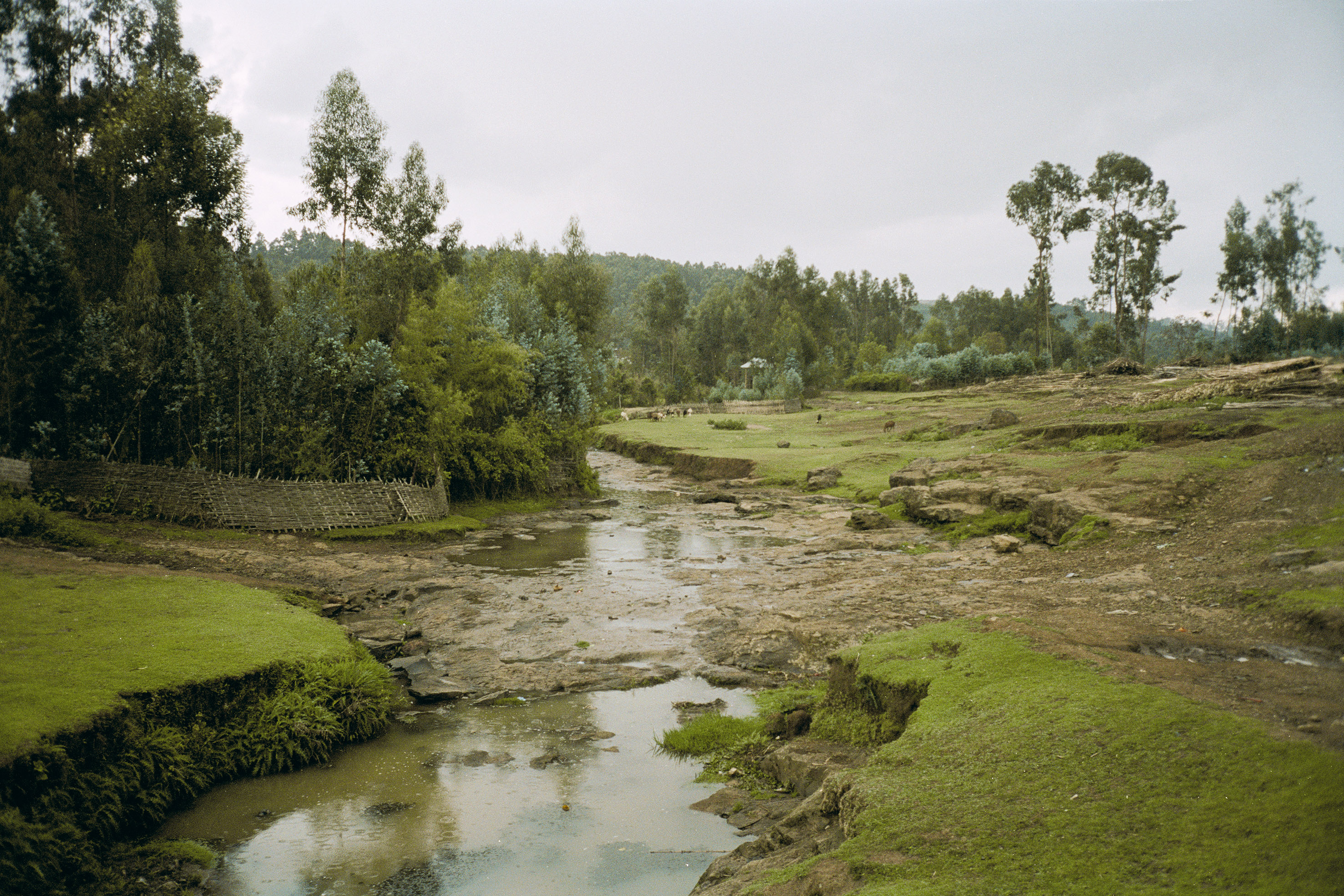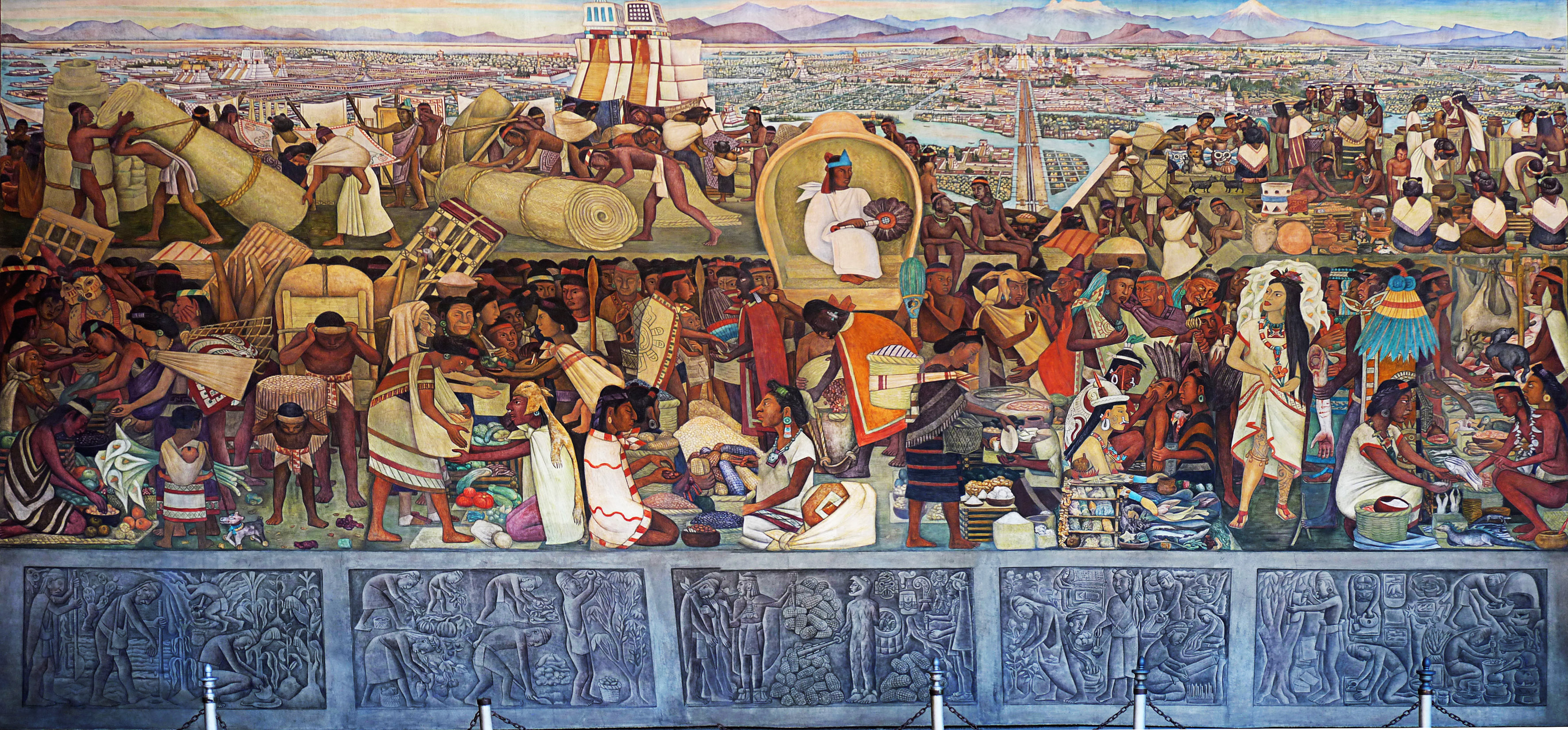
On the continent of Africa, the colonial economic arrangements never really ended. To discover this, you need look no further than the food on your plates.
“Where is imperialism? Look at your plates when you eat. The imported grains of rice, corn, and millet – that is imperialism. Let’s not look any further.”
I’m standing in the fruit and veg section at a Carrefour in Abidjan, examining already-mouldy punnets of blueberries and searching desperately for just two hundred useable grams of imported fruit, when I’m once again haunted by these words from the Burkinabè revolutionary leader Thomas Sankara. Sankara rose to the presidency of Burkina Faso in 1983 and led the country on a Marxist-Leninist agenda that was staunchly anti-imperialist. By the time he was assassinated in a foreign-backed coup in 1987, his ideas about food sovereignty had spread across the continent.
I was prompted to engage with Sankara after I made what was supposed to be a temporary move from London to Abidjan, the capital city of Côte d’Ivoire, at the start of this year. Like many people, my plans were shifted by Covid-19 and I’ve found myself here for an extended period of time. To be fair, this has only presented a minor problem. Abidjan is a city that has always been close to my heart; I lived here for a few years as a child before the First Ivorian Civil War and my parents moved back seven years ago once the political situation settled down. But the city has never been more than a pit stop for me – a place to recharge over the summer before returning to my “real” life in the UK.
Something I’ve clung to while trying to process the move has been British food. Some elements travelled here easily with me. Circuitously, it’s been the advocacy of British West Africans which has revived my lost childhood love of plantain, so leaning into that has been straightforward. But it’s British desserts I’ve been missing the most, quietly bookmarking a recipe for a damson crumble and fantasising about freshly griddled peaches topped with a hefty dollop of ricotta. The greatest challenge involved the blueberries, which were intended to adorn a cinnamon pavlova alongside some fresh figs. Three supermarkets and many webs of mould later I switched out the cinnamon for cardamom and replaced the berries with chunks of Ivorian mango and pineapple.
The piles of imported, slowly rotting fruit that I encountered during my search offered a useful metaphor for imperialism, but to focus on them does not go far enough. When Sankara said ‘let us try to eat what we control ourselves’, his statement went beyond advocating localism and encouraging middle-class migrants to rethink their desire to make seasonal Diana Henry recipes. Rather, he was making a point both about Burkina Faso’s dependency on food aid and about how Burkinabè wages make their way into French pockets rather than enriching the country itself. So, in addition to laying off the not-so-fresh berries, I decided to engage with Sankara by reaching out to activists across a range of African countries to learn about what food imperialism looks like today and if much has changed since his speech in the 1980s. What I learnt is that the struggle for independence is ongoing in Africa, and that the terrain of industrial farming is where many of our battles are being fought.
Clare Rono is a Kenyan environmental activist and member of the Ogiek tribe, whose ancestral land is the Mau Forest located in the Rift Valley. The Ogiek’s livelihood has been devastated by deforestation of their land, caused in part by the planting of Kenya’s biggest cash crop on its outskirts – tea. The tea plant was introduced for industrial farming by the British in 1903 and now Kenya is the world’s largest exporter of black tea, almost exclusively as a commodity product. Encroaching plantations have had terrible consequences for the environment and led to the displacement of the Ogiek who, as Rono states, are reliant on the forest for honey, fruit, and wild meat. Some have been forced to take up farming to survive, effectively being pushed into the cash crop economy.
In Côte d’Ivoire, something similar is happening with cashews. Cashew trees were introduced in the 1960s to tackle deforestation, and since then the country’s cashew nut export market has grown immensely. Most of the nuts are sent to Vietnam and India for processing before they are exported to markets across the rest of the world, including top importers such as the USA and Germany. As cashew orchards expand to meet growing global demand, the néré tree – indigenous to west Africa and used for both medicinal and food purposes – faces an existential threat. One of the many usages of the tree is in the production of the popular condiment called soumara, made from fermented néré seeds and likened to miso paste. According to Yacouba Yeo, an Ivorian organiser committed to preserving the production of soumara, the two markets are in direct opposition and néré trees are now felled to make room for cashew orchards. The trees have become so rare that their seeds are frequently replaced with soybeans, which both change the taste of soumara and risk eliminating the traditional knowledge surrounding its production.
Stories like these form part of a colonial legacy of monoculture, an agricultural policy in which colonial economies were organised around one or two cash crops intended primarily to feed the Global North. While African economies have diversified somewhat in the decades since formal independence, the needs of imperialist nations still dictate African policy. This is what independence fighter and first President of Ghana Kwame Nkrumah defined as ‘neo-colonialism’, a global system in which ostensibly sovereign states have their economies – and therefore their political decisions – directed by foreign actors. This results in environmental destruction, displacement and epistemicide, all phenomena that impoverish Africans culturally and economically.
The effect of imperialism is not limited to what is grown on African land. Imperialist dynamics can also be found within international trade agreements that govern African import practices. One example is the Economic Partnership Agreements (EPAs) made between the EU and African, Caribbean and Pacific countries. These deals liberalise African economies, allowing European nations to use Africa as a place in which to dump the glut of cheap products that have exceeded demand in their own countries.
In return, African producers are given similar legal privileges in terms of accessing the EU market. However, in reality European producers disproportionately benefit. African smallholder farmers, who account for 90% of all farms on the continent, are generally uninterested in producing for a European market yet face intense competition from foreigners. Aloysius Tucker, District Coordinator for Slow Food in the coastal town of Bonthe in Sierra Leone, confirms that foreign imports hinder local production by discouraging local agricultural workers who can’t compete with foreigners’ low, subsidised prices. Small-scale fishers in particular have lamented the terms of EPAs as their markets are flooded with processed fish from EU factories which are sold at prices well below what these fishers would need to survive.
A final factor to consider here is the dependence of farmers on violent market fluctuations over which they have no control. In Côte d’Ivoire, where the farmers who have made the country the largest cocoa bean producer in the world are already paid poverty wages, the price guaranteed to them by the state was slashed by 36% in 2017 to account for a global oversupply of the crop. This was then raised again in 2018, but most farmers that year still did not earn a living income as defined by Fairtrade International. This is in spite of the fact that Côte d’Ivoire has been celebrated in recent years for having one of the fastest-growing economies in the world.
The solution to food imperialism doesn’t lie in the market. In fact, as economist Samir Amin predicted in his 1971 text Neo-colonialism in West Africa, the deeper African economies embed themselves into the global market, the worse some of the problems discussed above become. What is needed instead is direct action across the continent and a return to indigenous food practices.
And the work is being done. Zimbabwe offers a good example, where farmers are responding to worsening climate conditions – predominantly caused by the Global North – that prevent the growth of their staple crop maize (itself said to have been introduced by the Portuguese in the 16th century) by encouraging a return to indigenous, drought-resistant crops like millet and sorghum. This then allows them to bypass imported wheat and rice foisted upon them. One of these farmers is Dr Chidara Muchineripi, who set up the Chinyika Communities Development Programme in Gutu, a district in southern Zimbabwe, in 2005, a project aimed at persuading farmers to switch from maize to finger millet. By 2014, every farmer seriously engaged in finger millet production had a strategic food reserve of three to five years, and collectively they had the capacity to produce an annual surplus of 2000 tons. Families in the district then had a stable supply of food, achieved without foreign intervention and through the use of indigenous farming methods.
Mali also stands out as an example to follow. Following a food crisis in 2007, rice farmers organised nationally, pushing the government to restrict imports and support domestic rice production by giving small farmers access to sufficient land and water. By 2017, rice production was double the country’s annual consumption and in 2019 Mali was the only west African country to meet its rice self-sufficiency targets. This illustrates that government support of local production can be more effective at tackling food insecurity than partnering with big business.
This pattern is happening across the continent, where some of the most crucial work is done through the Slow Food network, a global grassroots organisation that seeks to preserve indigenous food cultures and traditions. In Kenya and Sierra Leone, Slow Food works with schools and communities to promote sustainable food production while empowering activists to advocate for policy changes that are conducive to indigenous farming practices.
There are questions to be asked about how indigenous farming can be meaningfully developed from its current subsistence level to the point at which it can once again feed the entire continent. Tucker is not entirely confident. Under current conditions, he argues, traditional farming cannot grow beyond a certain point. But Ibrahim Mansaray, another Sierra Leonean and vocal advocate for agroecological farming, disagrees. He argues that indigenous epistemologies can spread if integrated into our notions of what counts as “development”. Similarly, Ferdinand Wafula, a Slow Food activist in Kenya, offers solutions such as government tax relief for indigenous farmers that adopt more sustainable methods of food production.
Then there are those like Elphas Masanga, another Slow Food organiser, who believe the mould can be broken entirely. He stresses the importance of building numbers and connecting small-scale farmers across the continent because, even against the wall of transnational capital, “if we are many… we’ll still win because we are the people and we’re the ones in control. We only need to say we don’t need your chemicals and we don’t need your seed in this country”.
I made poulet yassa the other day, a Senegalese chicken dish that is very popular in Abidjan. While searching for a recipe online, I found many heated arguments about what constitutes a “traditional” yassa, with some claiming that one can only use onions and lime juice in the marinade and others swearing that a yassa is simply not a yassa without the addition of a tablespoon of Dijon mustard and a handful of olives.
Africans are very much embedded in global culture, even if that embedding has largely been to our detriment. But listening to each person I interviewed I was struck by what I think is the greatest contradiction of imperialism: it has connected millions into a shared struggle. Colonialism armed an entire continent with a small collection of shared languages through which to communicate, and national units through which to render legible our calls for independence.
I think Masanga is probably right. The numbers are there. His work and the work of countless others like him affirm the existence of a continued struggle. Sankara’s point, that the battle against imperialism is fought on our plates, remains true today. It’s where the battle can be won, too.
This article was originally published at Vittles.


